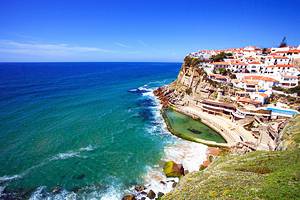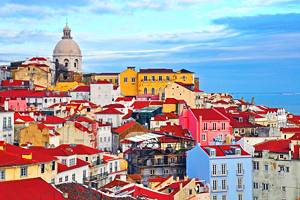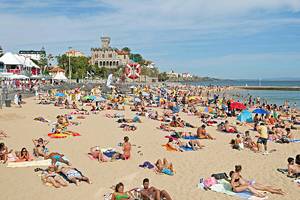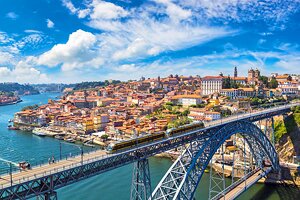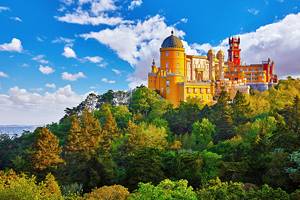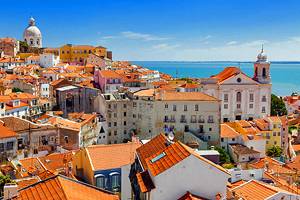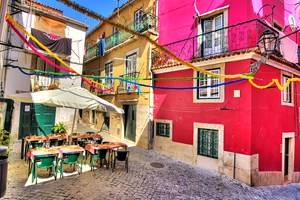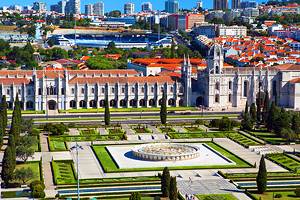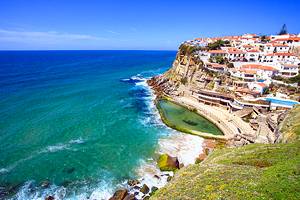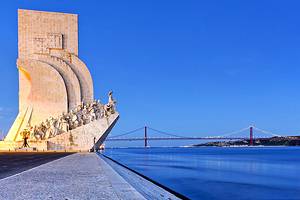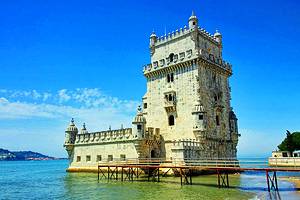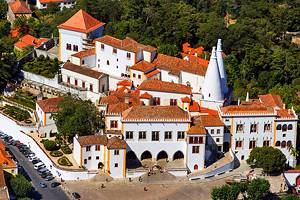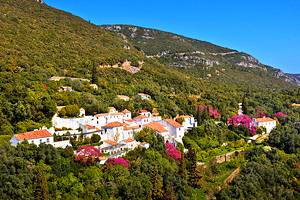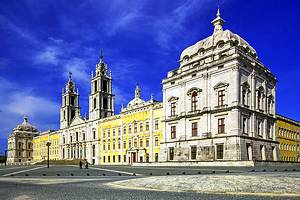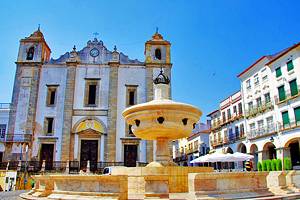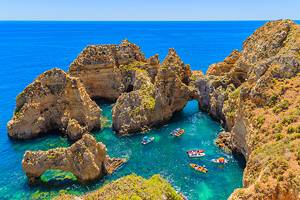Exploring Museu Nacional do Azulejo & Convento da Madre de Deus: A Visitor's Guide
The National Tile Museum in Lisbon is the only museum in Portugal dedicated to the azulejo and houses a hugely impressive collection of these decorative tiles, with outstanding examples from the 15th century to the present day.
Set in the church and cloisters of Madre de Deus, a former 16th-century convent, this worthwhile tourist attraction lies some distance from the city center, about 1.5 kilometers east of Santa Apolónia railway station, but is easily reached by bus.
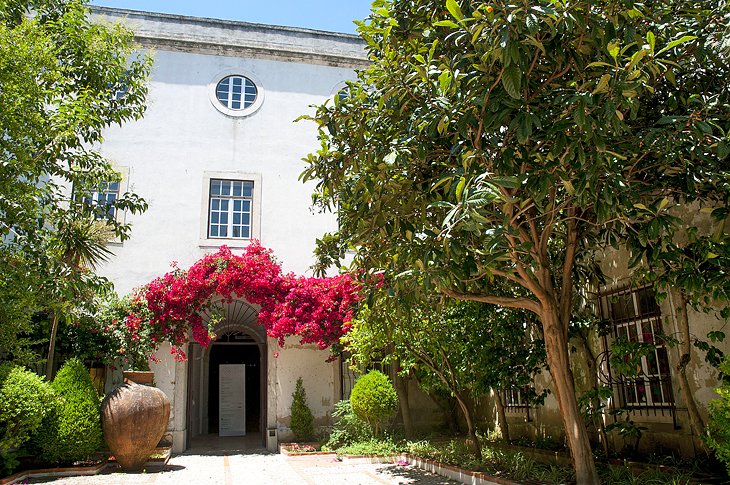
Founded in 1509 by Queen D. Leonor, sister of Manuel I and widow of King João II, the Convento da Madre de Deus was originally constructed in the Manueline style. The great earthquake of 1755 caused substantial damage to the building and after careful renovation, successive monarchs added their own architectural signature, with João III opting for simple Renaissance flourishes, while João V later chose to embellish the church with sumptuous Baroque decoration.
The only original Manueline structure is the small and graceful cloister (the church's south portal is a 19th-century reconstruction from a 16th-century painting hanging in the city's Museu Nacional de Arte Antiga).
The collection is displayed chronologically in rooms set alongside the Renaissance cloister - one of the most enchanting locations for any museum display in Lisbon. Sightseers can meander through the halls, which trace the development of tile-making, from its Moorish origins to contemporary artistic interpretations.
Included in a tour is the stunning interior of Madre de Deus, a dazzling ornamentation of gilded wood, shimmering blue-and-white azulejos, and a beautifully paneled ceiling.
The Chapel of St. Anthony is equally breathtaking. After exploring the museum and the church, visitors can savor a snack or a meal in the restaurant located in the gardens.
- Museu Nacional do Azulejo Gallery Guide
- Exhibition Highlights
- Arab Influence
- Painted Ceramic Tiles of the 17th and 18th Centuries
- The Modern Era
- Portugal's Longest Azulejo
- Exploring the Convento da Madre de Deus
- Renaissance and Manueline Cloisters
- Igreja Madre de Deus - Church and Chapterhouse
- Chapel of St. Anthony and Choir
- Kitchen and Gardens
- Visitor Tips
- Address
Museu Nacional do Azulejo Gallery Guide
Exhibition Highlights
The Renaissance cloister and other rooms accommodate the National Tile Museum and are curated chronologically, with the oldest tiles on the ground floor.
Your self-guided tour begins in Rooms 1 and 2, the starting point of the exhibition and where visitors are introduced to the origins behind the manufacture of azulejos.
Arab Influence
The Moors introduced the art of tile-making to Spain and Portugal. The word azulejo comes from the Arabic azzelij, or alzuleycha, which means "small polished stone" and refers to a ceramic piece, usually squared, with one side glazed.
From the 16th century onwards, Portugal started producing its own decorative tiles. Early examples drew heavily on Moorish style and technique, and materials and photographs explain the procedure behind the manufacture and decoration of these tiles.
There are two stunning examples of Moorish influenced azulejos that you should look out for: the Compositions with azulejos with Islamic motifs. Manufactured in Seville, Spain around 1500-1550, this pair of extraordinary Hispano-Arab panels dazzle in their complex geometric design. Flecked with yellow, green, blue, and white, the faience, or tin-glazed colors, are still bold and bright, and both are displayed complete and undamaged.
The scene-stealer, however, is the dramatic Nossa Senhora da Vida (Our Lady of Life), a huge altarpiece dating from 1580, manufactured using a technique known as maiolica, where the artist paints directly onto prepared tiles using several colors that don't run during the firing process.
Five meters in height and nearly the same in width, the panel is composed of 1,798 tiles in vivid hues. Its central theme is The Adoration of the Shepherds.
Painted Ceramic Tiles of the 17th and 18th Centuries
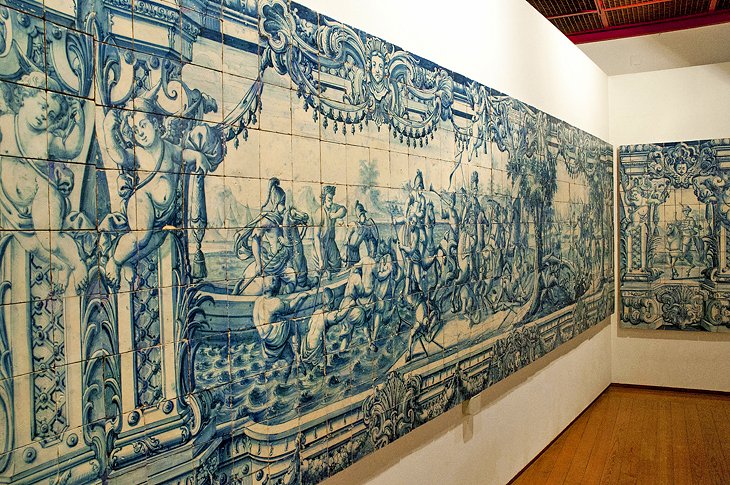
The timeline moves forward as you continue to browse the museum, and by Rooms 6 and 7, you've entered the 17th century and the Mannerist and early Baroque periods.
Here, carpet tiles - so-called because they imitated the patterns of Moorish rugs - are displayed as splendid polychrome faience wall panels, mainly in white, yellow, and blue. Don't miss the showpiece c. 1670 Tiled Altar Frontal, a particularly exuberant work brought alive by motifs of exotic birds and oriental themes.
Diverting slightly from the theme of the exhibition, the adjacent Casa Perfeitíssima (Perfect House) is a room dedicated to Queen D. Leonor, who founded the Convento da Madre de Deus in 1509. The painting on the wall is the fabulously detailed View of Jerusalem. The oil on oak is dated 1517 and is from the Flemish school.
Upstairs, the exhibition continues to highlight the Baroque, but also introduces visitors to the Neoclassical period and the 20th century.
As its name suggests, the Sala da Caça (Hunting Room) features late 17th-century panels depicting hunting scenes and wild animals, such as lions painted in a naïve style by artisans rather than artists.
The figurative wall panels displayed in Rooms 10 and 11 exemplify the development of Portugal's own style of azulejos, the familiar blue and white tiles seen everywhere throughout Lisbon and Portugal. The wall-long Alexander Fighting the Persians (1745) is a particularly animated example. In Room 12, look out for an anomaly, a beautiful and highly ornate gilded wood fountain dating from the second half of the 18th century and probably German in origin.
The Modern Era
Much of the second level is devoted to late 19th- and 20th-century azulejos, and pieces to look out for include an unusual figurative ceramic drain tile (1900) complete with a spout for a mouth and Butterfly and Ears of Corn, crafted by Rafael Bordalo Pinheiro (1846-1905), Portugal's most celebrated caricaturist and potter.
Another renowned ceramic artist, Maria Keil (1914-2012) is also represented, as is Júlio Pomar (1926-2018). Examples of their tile mosaics can be seen decorating some of Lisbon's underground metro stations.
Portugal's Longest Azulejo
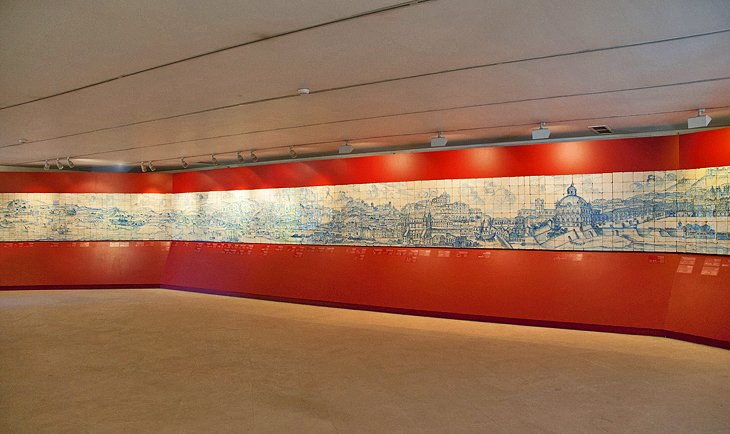
On the top floor, in Room G, is one of the most striking of all the museum's panels, the Great Panorama of Lisbon. At nearly 36 meters long, this incredible work of art depicts Lisbon and its suburbs before the 1755 earthquake. Monuments that can still be recognized include the Sé (cathedral), with its original bell towers; São Vicente de Fora; Mosteiro dos Jerónimos; and Torre de Belém, which was then sited in the middle of the River Tagus.
Exploring the Convento da Madre de Deus
Renaissance and Manueline Cloisters
The convent's handsome Renaissance cloister provides a suitably romantic setting for the museum, and exudes an atmosphere of unity and tranquility. Designed by Diogo de Torralva (1500-66), the doubled-tiered quadrangle looks over trim gardens and an ornamental fountain.
Tucked away from view is the smaller Manueline cloister, a surviving feature of the original convent, which you walk through in order to climb the stairs to the museum's second level. Resplendent geometrical tiles that were added to the walls in the 19th century enhance the cloister's graceful appearance.
Igreja Madre de Deus - Church and Chapterhouse
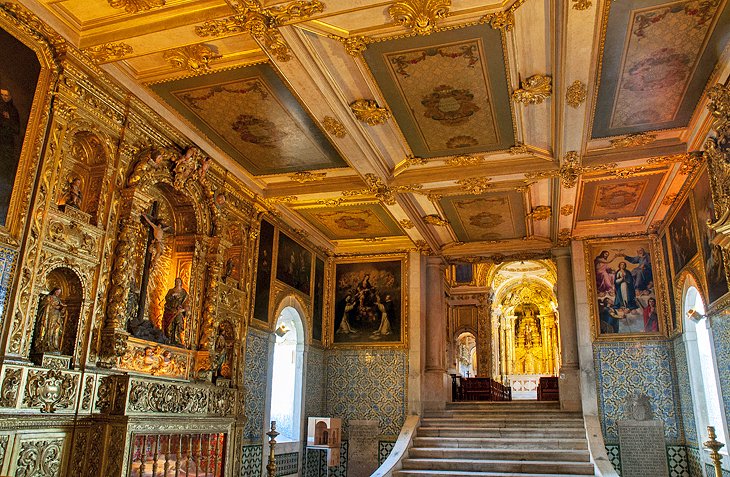
Besides its unique collection of azulejos, a tour of the National Tile Museum takes in the church of Madre de Deus, the interior of which has one of the finest examples of Baroque decoration in Portugal.
Entry is gained via the chapterhouse, itself a riot of gilded wood and a stunning medley of paintings that line the walls and ceiling. This eye-popping veneer is carried through to the church, where the lower walls feature shimmering, 17th-century, blue-and-white tile decoration attributed to Willem Van Der Kloet (1666-1774) and Jan Van Oort, who died in 1699.
The focus of the magnificent ceiling is The Coronation of the Virgin, painted in 1759 by André Gonçalves. The sumptuous Rococo altarpiece, surmounted by a sculpture of Our Lady of Contentment, was added after the earthquake of 1755.
Chapel of St. Anthony and Choir
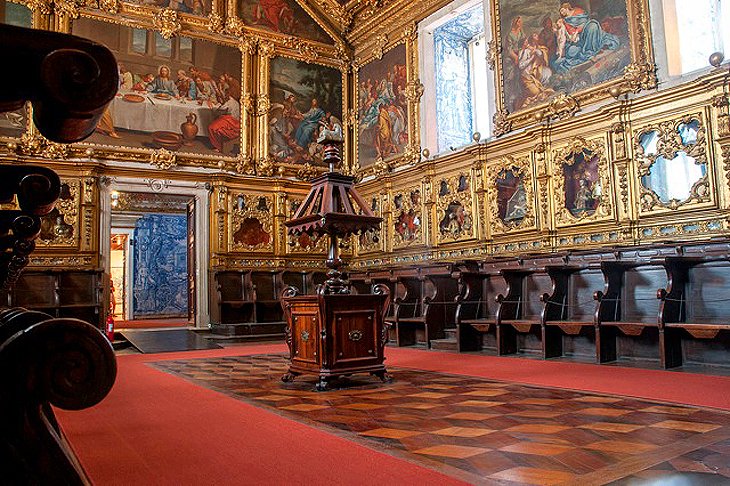
Upstairs, the equally jaw-dropping Chapel of St. Anthony displays an astonishing early 18th-century painted terra-cotta crib, where an ensemble of biblical characters, including the shepherds and Herald Angels, surround the Holy Family.
Visitors are then invited into the Choir, a hall lavishly adorned with gilt-framed 16th- and 17th-century paintings and panels, illustrating the cycle of Christ's life, and 18th-century showcases with reliquaries of saints. The balcony affords a glorious perspective of the church below.
Kitchen and Gardens
The convent's former kitchens have been turned into a rather smart café-restaurant, the walls of which retain the original 19th-century tiles showing hanging fish and game, including wild boar and pheasant. Antique copper utensils are also on display. The lovely gardens are set with outside tables shaded by lofty palms.
Visitor Tips
The National Tile Museum provides a fascinating insight into the development of tile-making, and visitors can spend a good hour here browsing the collection.
- The museum has a mobile app that works like an audio guide to explain the permanent collection and the history of the convent. It's available in English, Portuguese, and international sign language, and for Android and iPhone. You can download it from Google Play store or through the museum's website.
- Information panels in Braille and the reproduction in miniature bas-relief of some tile panel decoration assists sightless visitors in identifying certain exhibits. Handsets running video in sign language convey meaning to the deaf - the first museum in Portugal to provide visitors with this kind of communication.
- Wheelchair access: The museum is fitted with ramps and elevators.
More Related Articles on PlanetWare.com
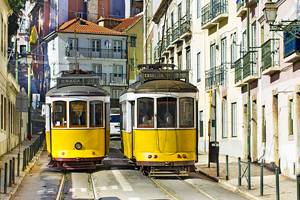
Lisbon: By planning ahead, you can pack plenty of things to do into a trip to the Portuguese capital. For a more leisurely experience, plan on several days. For ideas on what to see, where to eat, where to shop, and where to stay see our multi-day itineraries for Lisbon.
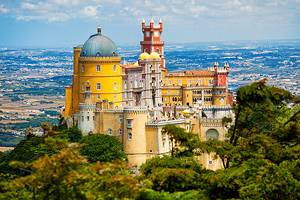
Destinations near the National Tile Museum: One neighborhood with more than its fair share of stunning tourist attractions is Belém, which features two UNESCO World Heritage-listed monuments. And if culture and architecture appeal to you, head to Sintra for the day, another destination distinguished by UNESCO for its collection of rare and impressive crowd-pleasers, buildings such as the beautiful Palácio Nacional de Sintra.


